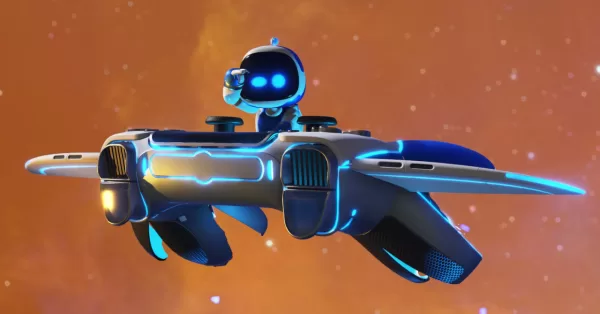Astro Bot director explains how Team Asobi made the difficult bonus levels and playable credits
Here's how Team Asobi made Astro Bot's memorable bonus levels and credits sequence.

During Tokyo Game Show 2024, we got to have a chat with Astro Bot director Nicolas Doucet to ask him questions about Team Asobi’s excellent platformer.
Aside from sharing with us his thoughts on honoring Japan Studio’s legacy with the game, Doucet also told us some interesting stories about the game’s development. Specifically when it came to developing the bonus levels and playable credits sequence.
While reviewing the game, one of my few concerns was difficulty as I found the main story levels to be fairly easy. This changed the more I progressed through the game as the main levels themselves still proved to have a good level of difficulty. But for platforming experts, the various bonus levels offer serious challenges.
As someone who is not at all an expert when it comes to platformers, I found these levels to be hugely difficult, but without feeling unfair. In that sense, I think that Team Asobi nailed the difficulty of these, which I believe many players also agree with.

Thus, balancing the difficulty of these levels was one of the things I asked Astro Bot director Doucet during the TGS interview. He mentioned that iteration and continuous playtesting were the key. Interestingly, he also shared that these levels were made mostly by just two people.
Doucet explained the process as:
“I think it’s iteration. There were two levels that were a great benchmark. First is the level with triangle signs where you get to grind on them, and you have to wait to go between the mines. That was the first good benchmark. And the other one was the level with lots of circles with guys swinging. It’s a very hard one because you can’t stop, you have to keep moving.
These two became benchmarks of the difficulty, tempo, and length [of levels]. And then after that, it was a case of [iteration]. There were two designers in charge of these challenge levels, but mostly one person made them, and her job was to multiply [the benchmark levels] four by four, so 16 times plus the final 17th challenge, and to make sure that each level would have something unique.
But to have that [balanced] difficulty, we did it by playing. All of us every two weeks, we played the game together, the whole game. During those times, we were able to identify if something was too easy or too hard. Right up to the end of the project, we were changing it because when you talk to gamers, it’s never hard enough, but when you talk to non-gamers, it’s very frustrating, right? So, we were moving it to the last minute.”

The fact that the levels had changed down to the last minute made sense given how hard it is to nail the balance between difficulty without being unfair. On the flip side, it’s interesting that the opposite was the case for the game’s playable credits.
While it’s far from a difficult level, the credits sequence was memorable for different reasons. As many players remarked, the interactive credits were the perfect way to cap off the experience.
As for how they created it and the philosophy behind it, the Astro Bot director shared:
“That level, we put quite a lot of love into it. There was always somebody working on it near the end of the project. In itself, it didn’t take that long because it’s using a lot of the content from the game. But the process of why we did it is because we want the player to be playing the game, if possible, 100% of the time, and otherwise, 99% of the time. You don’t want it to be ever just passive, right?
So, even when you do credits, interactive credits, we’re not the first people to do it. There are many games I’ve done before. It’s always fun. It’s like the game should never stop all the way to the end. Because, honestly, credits are quite boring, right? We’re happy to put the credits in because that’s important to us, but to the player, it’s just names, right? So, if you can make that part of the game fun and add some coins, then everybody’s happy. We’re happy that we have our names in and the players are happy that they can continue playing.
That’s why we have two types of credits. We have the interactive credits, and then we have the boring one that we know people want to skip, which is why there’s a skip button and you can skip the whole thing. We have to do it because it’s the right thing to do from a company point of view.”

Whether it’s for the challenge or for the sheer joy that the game had, Astro Bot is no doubt one of the highlight games of 2024 for many players. As such, we won’t be surprised to see it take home end-of-the-year awards this December. Though what we definitely hope to see more of is another Astro Bot series entry. Fingers crossed that we get one down the line.
Astro Bot is available now exclusively on the PS5.

